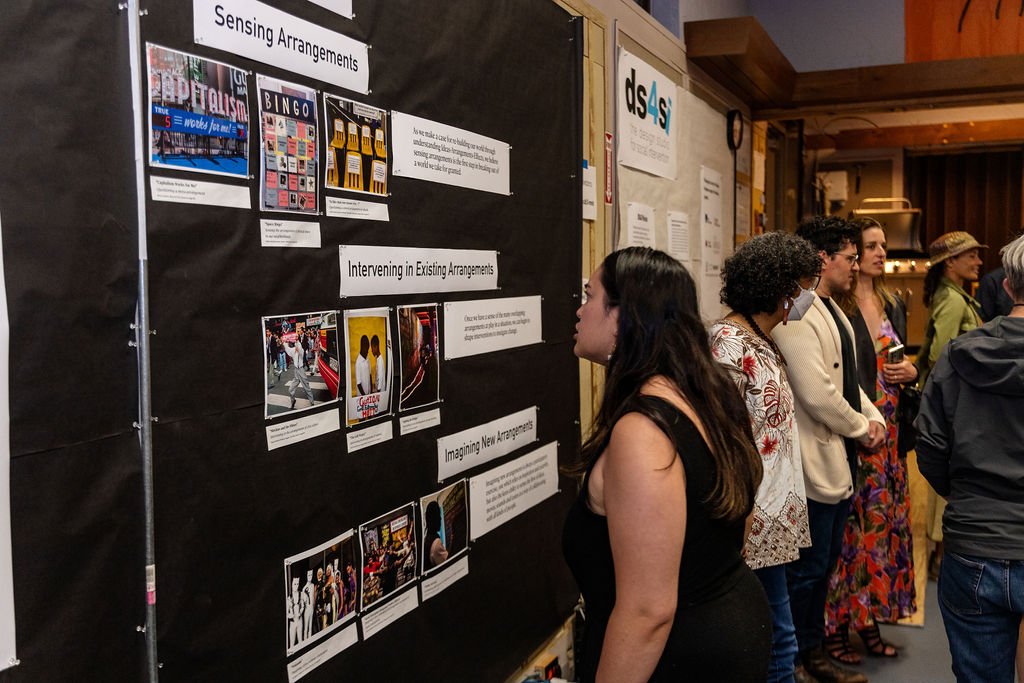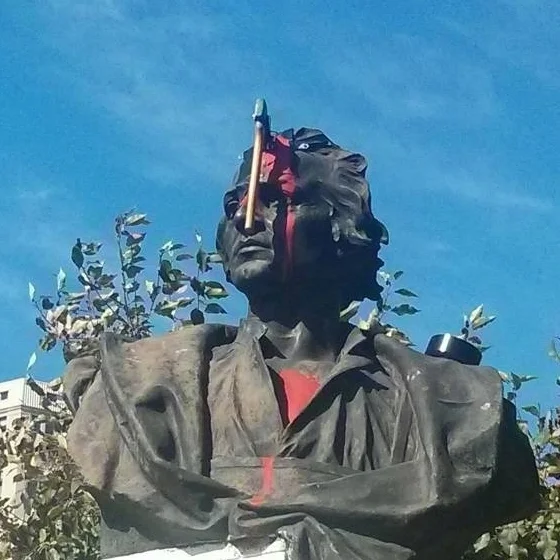
WRITINGS
Cultural Tactics
DS4SI works with artists to find new ways of exploring and exposing the nuances of culture—working with their skills in the realms of the symbolic, the unspoken and the possible. This paper explores three cultural tactics we've found effective in our work.
What We Learned from YADI's Big Urban Games
DS4SI designed and led large-scale adaptations of childhood street games like 4 square, hopscotch, taps and tug-of-war with over 200 youth and passers-by of all ages in Dorchester and Jamaica Plain, exploring the potential for intervening on social violence using unexpected tools like play, spectacle and delight.
Horizontal Strategies for Shifting Cultures from Within and Reducing Social Violence
We want to share what we've learned about deploying horizontal strategies in these situations. By horizontal strategies we mean solutions that are designed and deployed by the population which is experiencing the problem, and which are targeted towards creating widespread change within that population.
Art and Activism: A Case Study
We feel artists are critical to social justice work because art works with symbols, and artists understand how people, communities and cultures use symbols to make collective meaning. Understanding this aspect of social life makes it possible to work within it as a point of leverage for social change.
Rendering the Invisible Visible
Predatory planning is the intentional process of dispossession enacted through the simultaneous use of multiple, often globally powered, redevelopment tactics in the wake of trauma.
Cultural Geography and Place-Based Problem Solving
This document is meant to help social justice practitioners figure out the extent to which a social problem they face is enmeshed in the place they are trying to address it.
Creative Placemaking Implementation Plan (Upham's and Four Corners)
This paper is a rich "show and tell" of how we used creative placemaking to surface diverse intentions for public space near two underused commuter rail stations in Boston. Working with residents, artists and merchants, we brought hundreds of community members together to create solutions, possibilities and new connections.
Kimani Gray, Afrophobia and a Tool for Taking on State Sanctioned Violence
On March 9th, 2013, 16-year old Kimani Gray was shot and killed by two plainclothes NYPD police officers. Since then, of course, the brutal extent of state sanctioned violence against the black community has given rise to Black Lives Matter and numerous actions and protests around the country. And yet the murders keep coming. Here is a short paper we did after Kimani’s death, using our "Five S" methodology to think through the structures, systems, sensations, scale and symbols that can help us set the problem within the larger national context of Afrophobia, as well as helping us think about new ways to address the state sanctioned violence against black communities.
Ten Things All Interventionists Should Know about Intervening
We think of social interventions as actions taken to reconfigure social habits, unspoken agreements or arrangements that, prior to the intervention, add to the durability and normalcy of a social problem. This early DS4SI piece provides humorous and radical interventionist tips drawn from fields of design, play, philosophy and more.
Social Room: Making a More Civil Society
What would happen if there were greater social room for the expression of gender, as well as other elements of our identities? What can we learn from social interventions that create more empathy, like the “Sea of Pink” or the AIDS Quilt? We believe creating social room can be a transformational social technique, and while it’s not all that we need, it's certainly worth testing as a way of opening up new dialogues and creating the space for new solutions.
“Do You See Yourself in Upham’s Corner?”: A Case Study of Belonging, Dis-belonging and the Upham’s Corner ArtPlace Initiative
The Fairmount Cultural Corridor creative placemaking project began in Upham’s Corner. This energetic case study explores how the initiative used an artistic approach to increase local awareness, engagement and leadership regarding plans for Upham’s Corner and explore with the community what it would mean to create an “aesthetic of belonging” in one of the most vibrant, hectic and diverse neighborhoods in Boston.
A Case for Social Emergency Procedures
Just as fire drills train us for how to act and what to do in case of a physical emergency, we need drills and steps for how to act when there's a social emergency. (And in case you were wondering, the on-going state-sanctioned violence against Black people IS a social emergency.) We need steps that we are forced to practice, so we have some social version of “stop, drop and roll” ready to go when there’s a social fire. Here are some ideas...
Redlining the Adjacent Possible: Youth and Communities of Color Face the (Not) New Future of (Not) Work
The sharing economy gets lots of love, but we dig deeper to expose whose ideas of sharing get condoned and whose get condemned. We explore how race and class play out in what is adjacent and what is possible when it comes to how low-income young people of color face the not-new future of not-work.
Social / Justice / Practice: Exploring the Role of Artists in Creating a More Just and Social Public
This paper describes the creation of an energetic, new, third space—one where activists and artists come together with a shared understanding of the powerful possibilities for creative social interventions that can shift “small-c culture” and create change at the scale of the public. It explores how artists’ use of “productive fictions,” “elegant gestures,” humor, and surprise can interrupt social norms, helping people imagine new solutions to complex social problems.
The Public: A Work in Progress
A stronger public—one that can hold its institutions accountable—requires new visions for what public means. There need to be new ways to see and connect among people, new public spaces that encourage dialog and play, and even new public infrastructures that enrich lives and remind us that “public” means all of us. We believe a winning fight for social justice starts with a fight for the public...
Institutional Obesity: A Contextualized Approach to Understanding Childhood Obesity
Frames like childhood obesity seem so simple, even sympathetic, and yet in reality are complex and dangerous.
Who Shall Occupy Make Demands Of?
One of the biggest critiques being made of the Occupy movement is that it has no demands. If, however, we take the standpoint that Occupy functions in an interventionist mode-- if we see it as an Occupy moment rather than an Occupy movement-- we see that its refusal to issue demands is part of the beauty of it.
Spatial Justice
Space is currently functioning as one the most important resources for the expression of disapproval and outrage in this political moment. We are convinced that we can use it even better. This paper outlines our ideas for that, as well as putting them in the historical context of spatial justice and injustice.


















